Roof flashing is vital for maintaining the quality and reliability of your roof. If you haven’t heard of roof flashing before, don’t panic—we’ll go over what it is, how it works, and when yours might need to be replaced. At Guns n Hoses, we don’t only provide roof replacements and repairs, we’re also happy to share our expertise to help you learn about your home’s exterior and insulation needs.
See Also: Roofing Repair Services
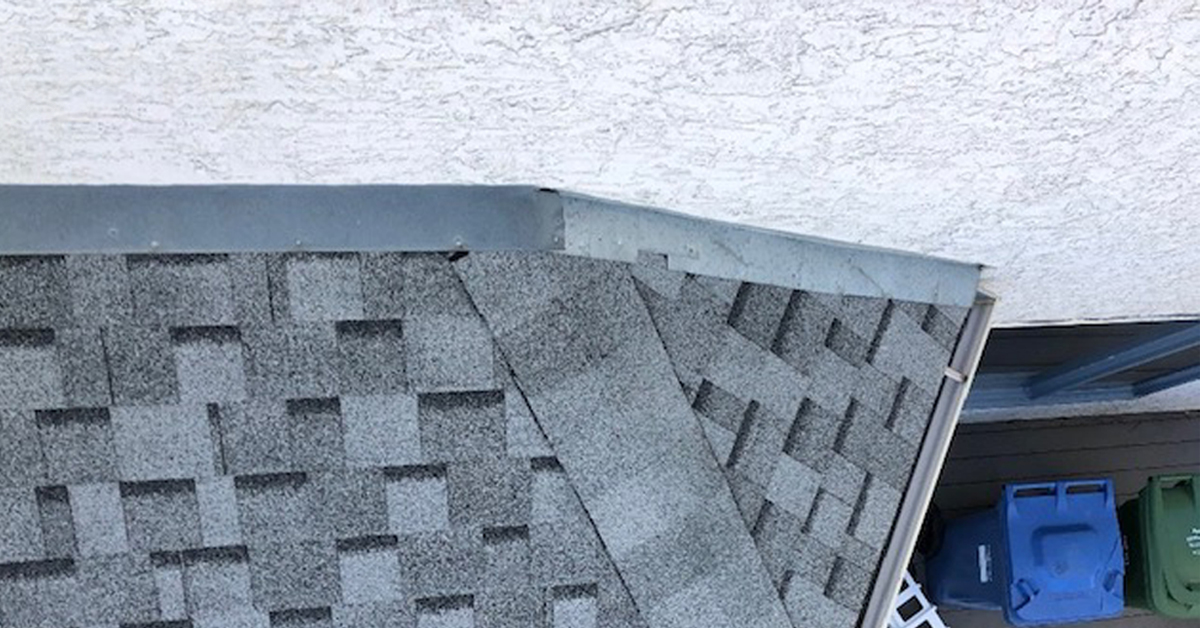
What Is Roof Flashing?
Have you ever noticed the metal sheets on your roof, chimney, or pipes? These sheets make up the roof flashing of your home and are there to protect your home from water damage and leaks.
How Does It Work?
The way flashing works has to do with the placement of the metal sheets. Depending on the location of the flashing, it may be placed differently. Flashing is placed purposely in different ways to direct pooling water away from the parts of your roof that are most susceptible to damage from moisture, like the joints or seams.
The Role Roof Flashing Plays in Your Home’s Envelope
Your home’s building envelope (also called the shell) separates the inside of your home from the outside. It includes the roof, walls, windows, doors, and foundations. The envelope protects your home from the outdoor elements and helps maintain temperature control.
Flashing plays an important role in your home’s envelope by keeping outdoor elements like water from getting into your roof and walls. It protects the underlay that sits under the shingles and the first layer of roofing, which is called the deck.
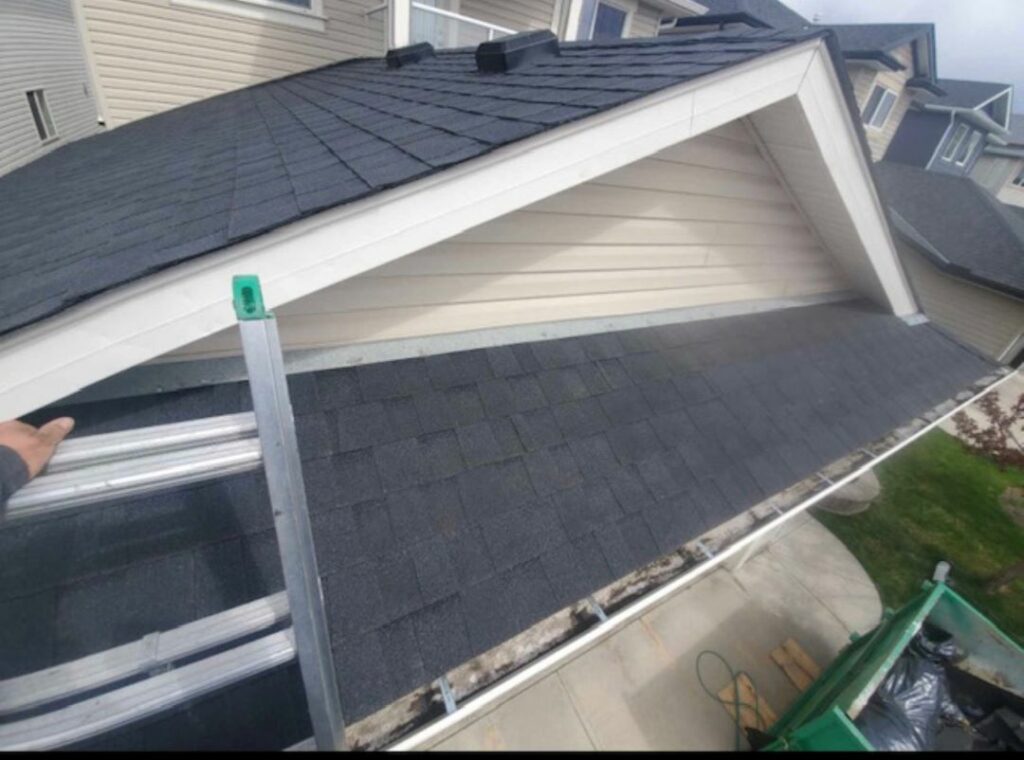
Roof Flashing Installation
Typically, roof flashing is placed before shingles are laid down. If shingles are already laid down, they will have to be removed to properly replace any damaged flashing.
Flashing is installed by starting at the corners located on your roof and working inward. Different methods are used to place the flashing around the roof.
Different Roof Flashing Types & Techniques
Although galvanized steel is the most commonly used metal for flashing, other metals may be used such as aluminum and copper. There are also different methods to roof flashing that depend on where the flashing is being placed. Let’s go over the most common types of flashing and where each would be installed on your roof.
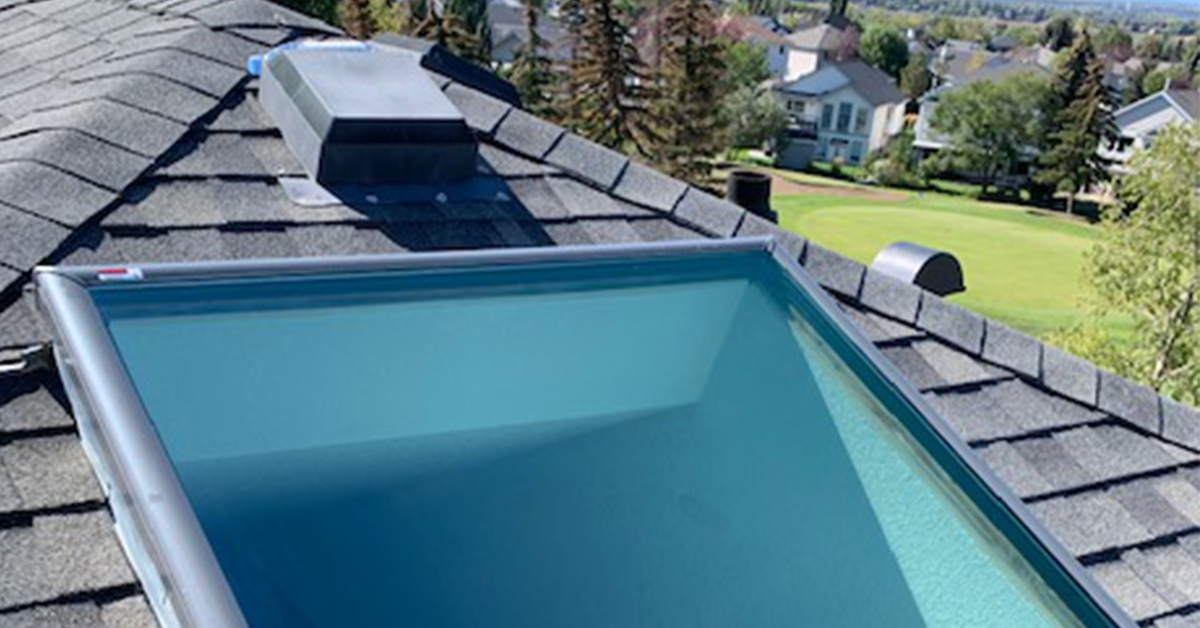
Step Flashing
Step flashing is used against the sides of any walls or chimneys the roof bumps into. In step flashing, the metal is bent at a 90 degree angle and placed underneath the shingle, against the wall it is being applied to. This process is repeated going upward to create a slope and prevent any openings for water to creep into.
Continuous Flashing
Continuous flashing, also known as apron flashing, is a long piece of metal that is cut to direct water down to the shingles from the base of a wall, window, or dormer. Although continuous flashing is sometimes used on walls and chimneys that bump into the roof, it is most commonly used around windows and dormers.
Counter Flashing
Counter flashing is sometimes confused with step flashing, since it has the appearance of steps. However, unlike step flashing, counter flashing is performed by cutting into walls made of stone or masonry that connect to the roof. This is done by sawing into the mortar joint.
Roof Flashing Replacement
Some signs of worn out flashing are obvious, but others are less apparent. For example, if you have step flashing, it won’t be visible since it’s underneath the shingles on your roof—so how do you know when it’s time to repair or replace it? Let’s go over some indicators that your flashing needs professional attention.
Visible Blemishes on Exposed Flashing
Weather elements like hail, heavy snow, or harsh winds can damage your flashing. A common sign that your flashing needs to be repaired is if you notice any rusting of the metal.
Additionally, any holes, dents, or cracks are a sure sign that it’s time to repair flashing. Failing to repair these issues can introduce water into your roof and into your home, causing water damage.
You should also inspect your flashing if you notice any interior leaks near windows, skylights, or fireplaces. These can all be signs that your flashing needs repairs.
Age of Roof Flashing
Roof flashing typically lasts between 10 and 20 years, but this will vary depending on the impacts from weather. In areas like Calgary, we often experience heavy snow in the winter and this can take a toll on your flashing. Replacing your flashing before it gets damaged will save you costly repairs from water damage.
Other Factors to Consider
If you are thinking of replacing your roof, but are unsure of whether your flashing needs replacing as well, we suggest you get a professional opinion. We also recommend that you check your roof annually to stay on top of any maintenance and avoid costly repairs resulting from water damage.
Don’t Cut Corners—Choose the Experts
Roof flashing plays an essential role in keeping water from entering into your home by directing water away from pooling areas. With such harsh winters in Calgary, it’s important to stay on top of the maintenance of your roof. The professionals at Guns n Hoses have extensive experience for all your roofing, exterior, and insulation needs. Contact our experts to get a quote!
Roof Flashing FAQs
How Much Does It Cost to Install Flashing?
The cost to install flashing will vary from home to home, and depend on the size of the roof. Some homes may need more flashing placed if they have numerous walls or chimneys butting up against the roof. Flashing repairs can range from $150 to $3000 depending on how minor or major the replacement is.
What Are the Signs that Flashing was Improperly Installed?
Reused flashing materials can be a dead giveaway that your flashing was installed incorrectly. Poor roofing companies often reuse flashing when doing roof repairs to save them time and cut corners.
Sometimes, low-quality roofing companies will also use shingles as flashing material and attach these shingles in places where metal flashing should be. These issues cost the homeowner more time and money since they make leaks all but inevitable.
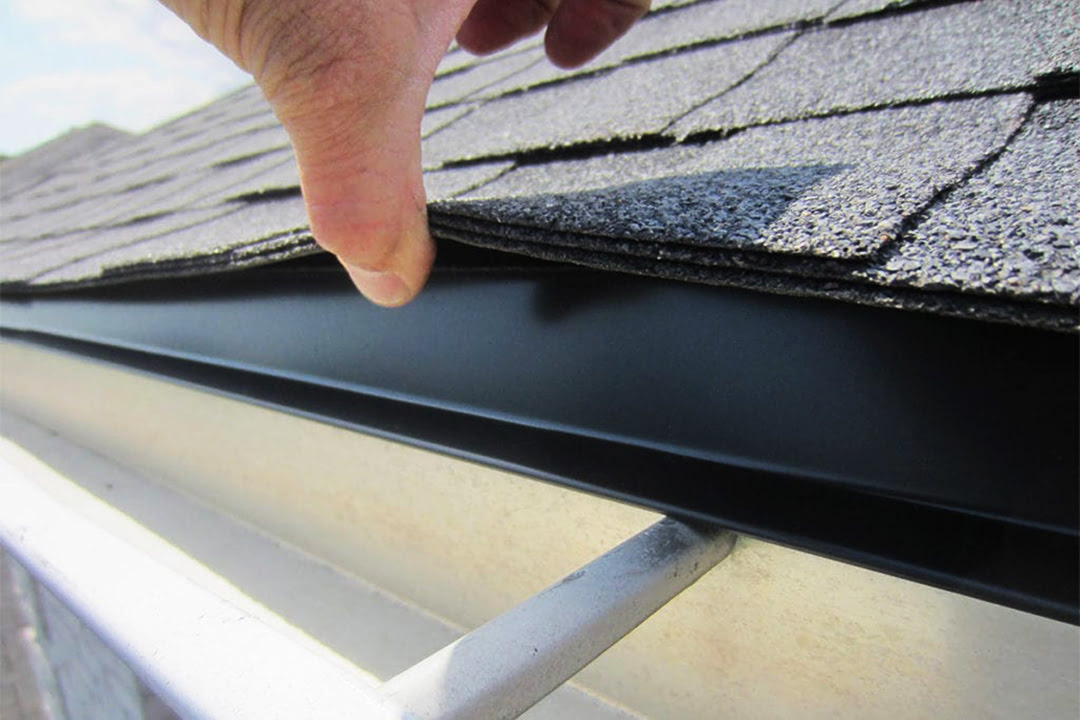
What Do I Do If Water Gets Between My Fascia and Eavestrough?
Check your drip edge. The drip edge is part of the roof flashing that acts as a barrier to cover the gaps between the shingles and the eavestroughs. The drip edge allows the water to run directly into the water, rather than between the fascia and eavestroughs.
If the drip edge is in good condition and water is still dripping between your fascia and eavestroughs, this could mean that your eavestroughs are loose. Sometimes tightening the brackets holding the eavestroughs in place is an easy fix.
If water is still leaking after tightening the brackets, you may need to replace the eavestroughs altogether. Contact us if you have any questions about your roof or your house’s exterior.
Love it or hate it, replacing a roof and roofing materials is something that almost every home needs eventually. All roofing materials are subject to aging and natural wear, but brutal weather conditions (like you find in Alberta) can shorten the lifespan of a residential roof.
Replacing a roof is expensive and a fairly major renovation. Choosing the right roofing material for your home is an important decision.
Asphalt shingles have been the most popular choice for residential roofing for several decades. These shingles are economical but lack the performance and aesthetic of other roofing materials such as wood, metal, and slate.
Rubber shingles and tiles are an emerging roofing solution for homeowners seeking reliable protection from hail storms and other damaging weather.
Let’s discuss what rubber roofing is, its benefits as a residential roofing material, and how it compares cost-wise to common types of shingles.
What Is Rubber Roofing?
Rubber emerged as a roofing material in the 1960s and was first used as a protective membrane for flat roofs. But modern manufacturing practices have allowed the development of rubber shingles and tiles that can be used for sloped residential applications.
Because rubber roofing uses recycled materials in its production process, they have become a sustainable option for eco-conscious homeowners. Rubber roofing is installed much the same as asphalt shingles or cedar shakes: by layering shingles or panels across a roof until there is complete coverage.
Rubber roofing can be installed on virtually any home, in almost any climate in North America.
Euroshield Roofing
Based in Calgary, Alberta, Euroshied® has established itself as a leader in rubber roofing for residential homes and other steep-sloped applications. Euroshield uses recycled rubber tires to manufacture an extremely durable roofing product. These shingles are available in various looks that mimic slate or wood roofing.
The Benefits of Euroshield Rubber Roofing
Every roofing material has its pros and cons, be it low cost, attractive design, or an extended lifetime. Euroshield has become the ideal choice for many, as a rubber roofing installation balances cost and performance in ways other materials can not.
Let’s talk about the benefits of Euroshield products and why you might see rubber roofing on your neighbour’s home sooner than later.
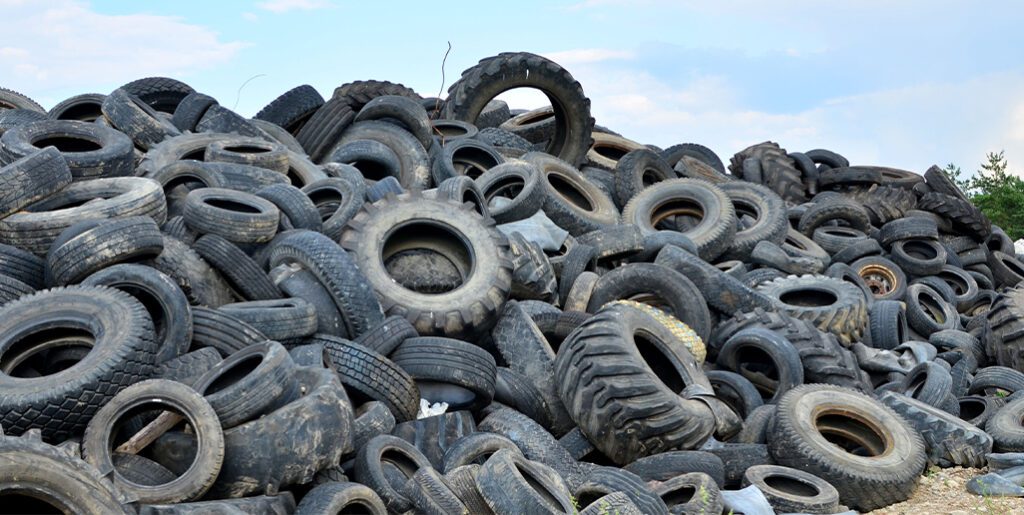
Extremely Eco-Friendly
It's no secret that environmentally-conscious producers are gaining momentum with consumers. Euroshield products are made from 95% recycled tires. This process removes used tires from landfills and recycles these discarded materials into high-performance roofing products.
Not only does this process reduce the amount of waste in landfills, but all Euroshield products are also 100% recyclable after use. Trim and scrap material from roof replacement projects can be recycled into new manufacturing.
Because Euroshield is virtually maintenance-free, there is no need for chemical treatments or other processes that may be harmful to the environment.
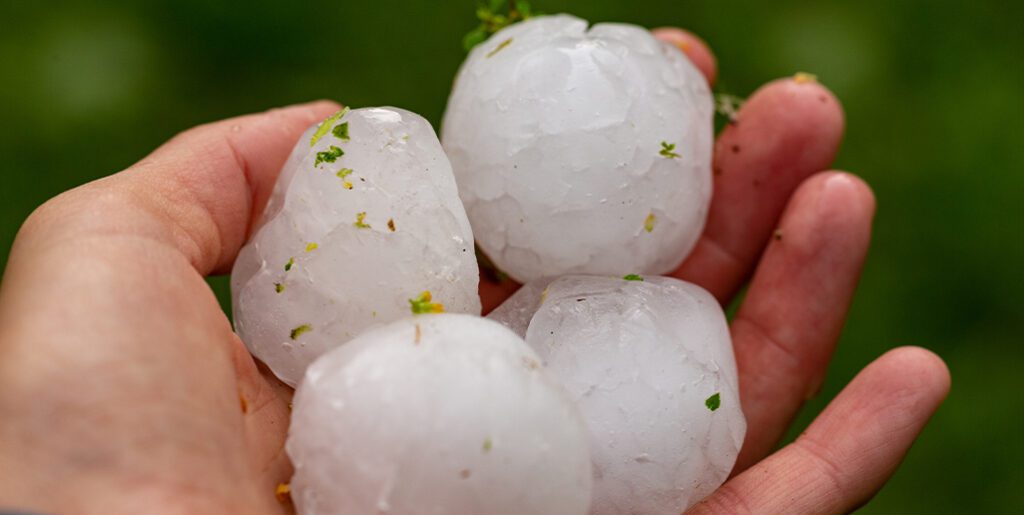
Superior Weather Resistance
Euroshield is one of the most hardy roofing materials in bad weather. Rubber shingles can withstand the hailstorms, extreme weather fluctuations, and freezing cold temperatures that Alberta faces each year.
All Euroshield roofs are warrantied to withstand the impact of 2-inch hailstones! Hail damage is the number one cause of roof repairs in Alberta. Roofing panels from Euroshiled have a Class 4 impact rating, the highest in the industry.
The interlocking design of Euroshield products prevents them from lifting or curling in windy conditions. In fact, these roofing panels have been tested in 170 mph winds!
Every roof should be waterproof fresh off an installation, but leaks can come about once weather damage occurs. Unlike slate shingles, rubber will not crack with exposure to temperature changes.
For durability, it's hard to beat Euroshield rubber roofing as a weather-resistant option.
Lasts for Ages
Metal and slate roofs are known for their long lifetimes. But these products are expensive to install and require regular maintenance to perform adequately.
A Euroshield roof should perform exceptionally for over 50 years! And without the need for constant maintenance or conditioning. Compare this with a typical shingle roof that will last for only 15-30 years.
Practically Maintenance Free
Because of rubber roofing's ability to withstand the elements, it is virtually a maintenance-free roof once your installation is complete. Euroshield products can withstand the pounding of hailstones and blizzards. And your roof won't crack or fade from UV exposure.
Maintaining your roof isn't exactly the most convenient task. And paying for professional roofing services can be expensive year after year. So unlike wood shingles and cedar shakes, you won't need to worry about annual treatments for your new roof when you choose rubber panels.
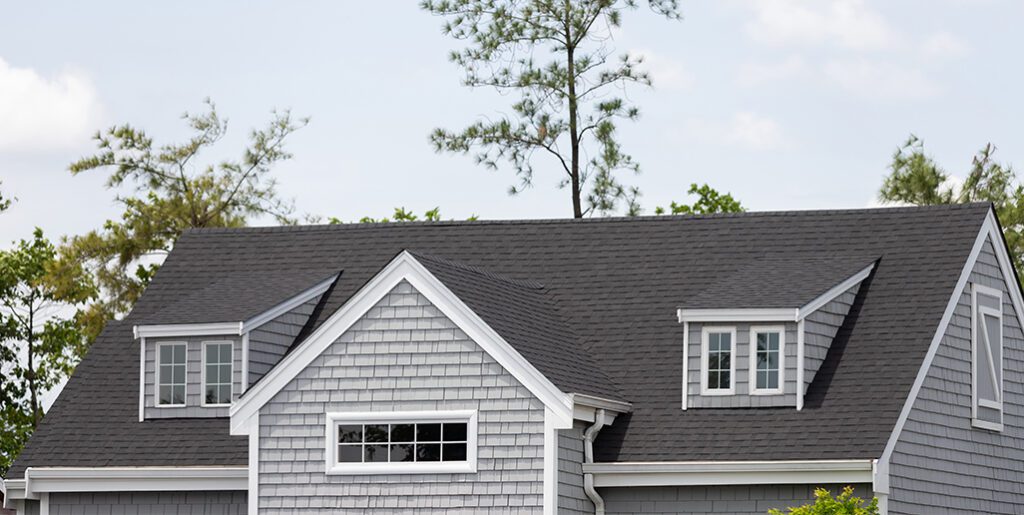
Versatile Aesthetics
Aesthetics is always about personal taste, but rubber roofing might be more appealing than you imagine. Euroshield has developed several products to match the look and textures of traditional slate or wood shingles.
Shake and slate Euroshield roofing materials come in a variety of styles to emulate roofing designs used for decades. You can decide for yourself if the look of rubber is up your alley, but know there is more than one option when it comes to the look of a new rubber roof.
The Cost of a Euroshield Roof
When you’re considering the cost of a new roof or roof replacement, it’s wise to consider a few factors:
- The initial costs of installation.
- The expected life of the roof.
- Regular maintenance costs.
- Warranty conditions.
It's important to look beyond the per-square-foot installation price when considering the long-term costs of your roofing investment. And keep in mind that material costs can fluctuate seasonally and regionally.
The size and shape of a residential roof can also affect the price tag for a new roof. That being said, you can expect Euroshield products to cost between 2 to 2 ½ times the price of asphalt shingles, depending on the exact products selected. You can also expect double the lifetime (or longer) with rubber panels.
The installation costs of Euroshield roofing are comparable to shake (wood) roofing. But remember that you can count on extended use and lower upkeep costs when selecting Euroshield products.
Slate roofing is more expensive than Euroshield. Under perfect conditions, slate can last 100 years. But the nature of the material makes it more susceptible to damage and more expensive to fix.
Euroshield Rubber Roofing vs Other Roofing Materials
| Roofing Material | Cost of Installation | Maintenance Costs | Average Lifetime |
| Asphalt Shingles | $ | $$ | 15-30 years |
| Euroshield Roofing | $$ | - | 50+ years |
| Wood Shakes | $$ | $$$ | 20-30 years |
| Slate Shingles | $$$ | $$ | 50+ years |
You'll want to contact a local roofing contractor for a more accurate estimate of your roof replacement costs. Our experts at Guns N Hoses are trained in Euroshield products and can help determine material costs for your roofing project.
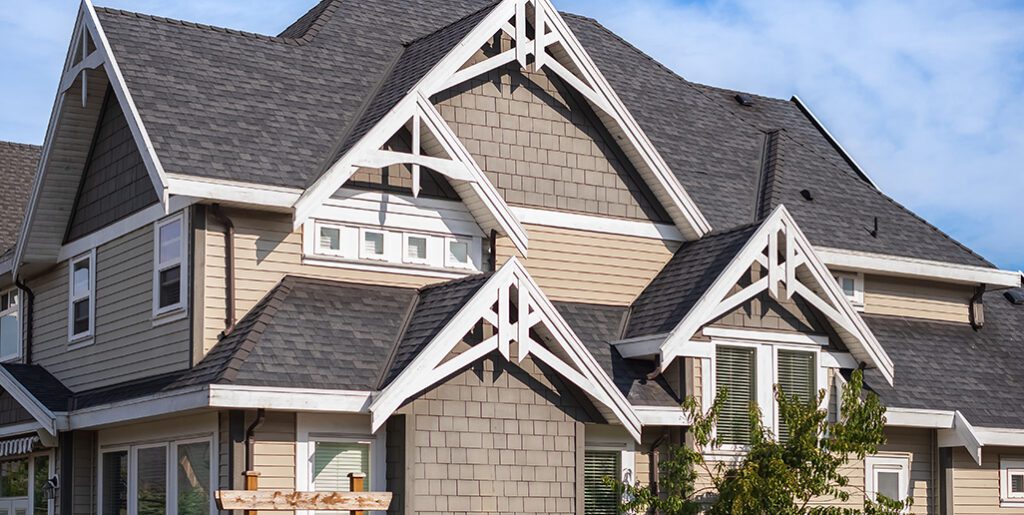
Euroshield Rubber Roofing for Albertans
If you live in a place with extreme weather conditions, you know the importance of having a strong and durable roof. When it comes to roofing materials, rubber is one of the best options out there. Not only is it highly resistant to wind and hail damage, but it virtually lasts forever.
Euroshield has become the premier choice for rubber roofing in Alberta. It combines sustainable, eco-friendly production with affordability to provide a practical roofing solution.
For all its benefits, Euroshield roofing does require specially trained roofing professionals to install it correctly and under warranty. Guns N Hoses is proud to include Euroshield products in our roofing portfolio and always excited to introduce hail-resistant roofing options.
Get in touch for more information on Euroshield and rubber roofing solutions.
Your home’s roof is made up of several components. Picking the right pieces to match your exterior aesthetic is the first thing people think of. But do soffits, facia, and eavestroughs affect the way your roof works?
The fact is that your eavestroughs, soffit, and fascia are all essential pieces of your roofing system. They work together to shed water from your roof and away from places that are vulnerable to damage. Proper installation and know-how are critical to ensure your system looks great and works!
Let’s discuss the role of each roofing part and why it’s important to take care of these roof components.
Understanding Roof Fascia
Fascia is a critical part of your home’s envelope. It is the transitional band between your exterior walls and your roof. Visually, fascia is the part of your roof that “frames” your house when you look at it straight on. Although often overlooked, fascia plays a big role in your home’s drainage and ventilation systems.
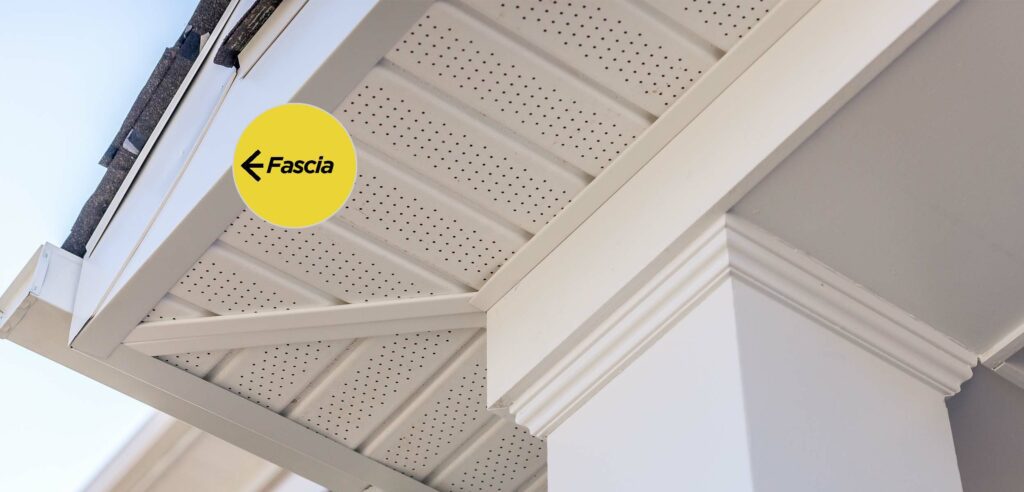
What is the Purpose of Fascia?
Fascia boards are in place along the edge of a roof. They protect exposed structural elements of your roof, like trusses, from the weather. Fascia also provides a support system for hanging your eavestroughs. It’s also where a j-channel flashing can be affixed, allowing soffits to be installed.
Additionally, fascia boards enclose openings along your roof’s edge. This keeps birds and other pests from setting up shop inside your roof cavity.
Types of Roof Fascia
Fascia boards are almost always wooden but can be clad with several different materials. In the old days, they would just slap a coat of paint on the fascia boards and be done with it. Now there are more cladding options with different purposes in mind.
Cladding covers the exposed side of your roof fascia. It helps weather-protect fascia and extends the life of this roofing material.
Aluminum Fascia Cladding
Aluminum is one of the more common choices in Alberta when it comes to fascia. Its flexibility makes installation easy, as it can be wrapped tightly around fascia boards and other wood fixtures. It helps to shed water from your eaves and protects any covered wood from rotting. Because it’s aluminum, it can do this without rusting.
Steel Fascia Cladding
Although much less common, some homeowners choose steel for fascia and cladding. Much like aluminum, it can be custom formed in place to clad wooden fixtures and cover fascia boards. It is more durable than aluminum and less prone to dents and bends. As a result, it can be a more costly option.
Another downside to steel fascia is the rust factor. If it gets nicked or scratched, the exposed steel will rust almost immediately.
Vinyl Fascia Cladding
Vinyl (or PVC) fascia is lightweight, flexible, and durable. It is virtually maintenance-free and can easily be kept clean. Although a more affordable option, vinyl tends to discolour over time with weathering and UV light. This leads some homeowners to look at other options.
Understanding Roof Soffits
Much like fascia, soffits contribute to the aesthetic appeal of a house. However, it serves a greater purpose in the ventilation and protection of your home. Here are some reasons why soffit is more important than you might think.
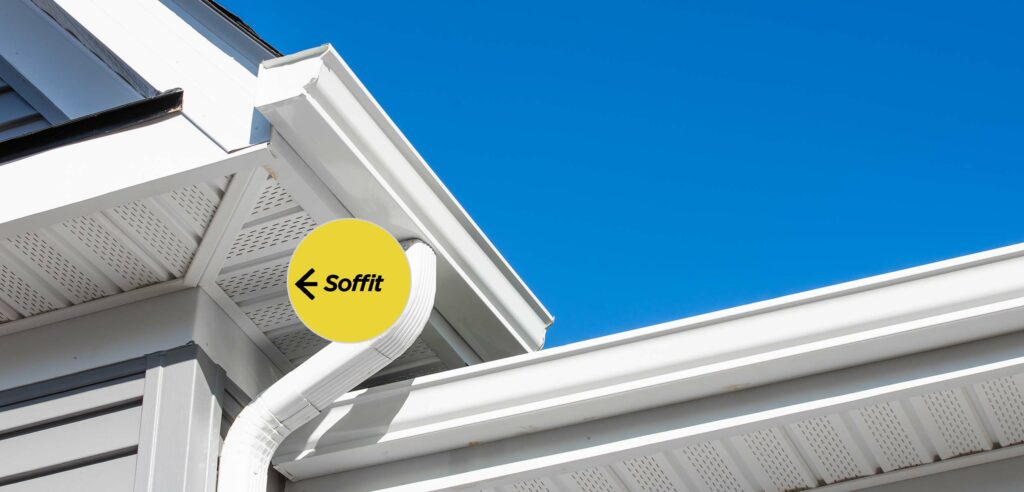
Natural Ventilation
Soffit works in tandem with your roof vents to allow air to pass through your attic. This prevents heat and condensation from building up inside your roof, which leads to mould and wood rot. It also allows your home to breathe during the hot summer months. A properly ventilated attic contributes to lower energy costs and a cool, comfortable home.
Furthermore, continuous airflow will help to improve your indoor air quality.
Keep the Critters Out
Another benefit of correctly installed soffits is the protection from pests trying to share your living space. Birds and rodents love to get into those tight spots along your eaves and gables. Soffits cover those openings, making it nearly impossible for critters to gain entry.
Allergens and dust from animal activity also contribute to poor air quality, so soffits also improve your breathing air.
Understanding Eavestroughs & Downspouts
Eavestroughs and downspouts do the heavy lifting when it comes to collecting water and moving it away from your house. Professional gutter installation and roof maintenance are keys to ensuring you don’t run into a drainage headache.
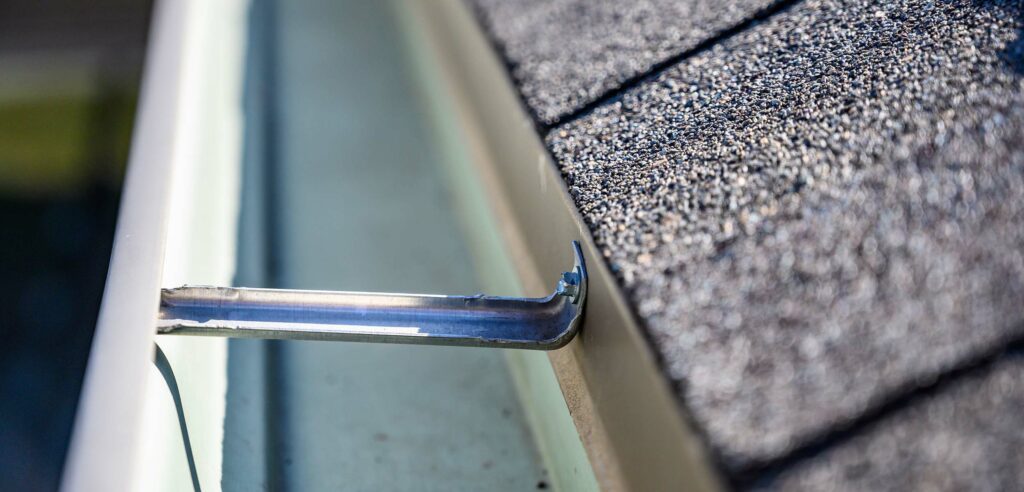
Why Are Eavestroughs Important?
Your roof covers a large area and collects a lot of water during heavy rainfall. Without eavestroughs (gutters), that water simply falls and negatively impacts your lawn and other surfaces.
Water pooling in the wrong places can put your house's foundation at risk of flooding. Gardens and landscaping can be damaged from constant water runoff, and walkways and steps become very slippery. Eavestroughs channel the water towards a downspout where it can drain properly.
Gutters are a critical part of your waterproofing system and must be maintained. Clogged or leaking gutters can cause significant damage to your exterior and even the structure of your home.
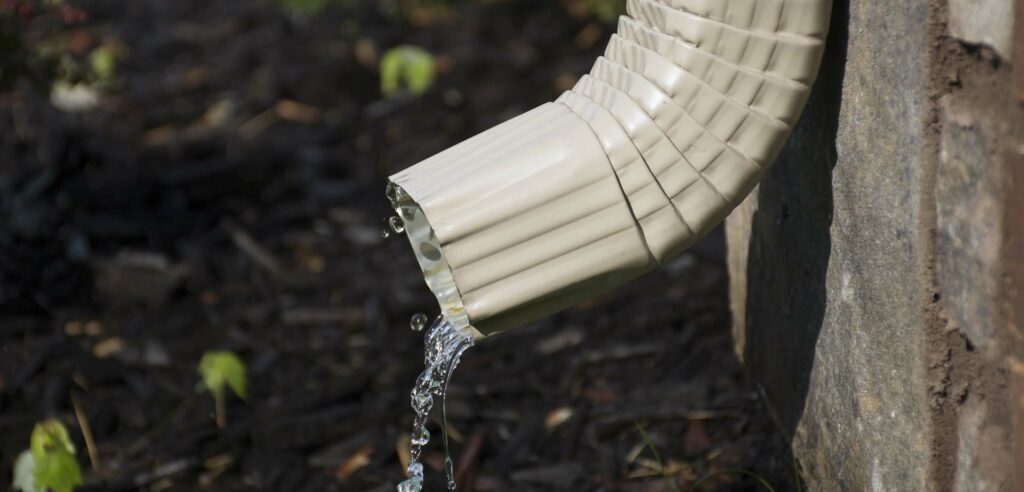
Why Are Downspouts Important?
Downspouts are responsible for getting water from your roof to the ground and away from your house. They need to be placed intentionally with drainage in mind. Many basement leaks are a direct result of a poorly placed downspout.
Downspouts reach the ground and are directed towards the street or downhill. Since they’re on the ground level, they are prone to damage from regular activity in the area. A damaged or clogged downspout can be disastrous for your roofing system. A quality, professional installation minimizes the risk of damages with on-site custom downspouts.
Eavestrough Maintenance
Keeping your gutters and downspouts clean is vital. Stillwater in eavestroughs can wick its way into materials along the edge of your roof. This leads to wood rot on the roof deck and even roof trusses if the problem isn't addressed.
Leaf guards are a popular choice for many homeowners. They make cleaning your gutters more manageable and help prevent eavestrough clogs during rainy seasons. Several types of leaf guards keep debris from building up in your roof’s drainage channels.

Soffits, Fascia, & Eavestroughs FAQs
I clean my gutters regularly, and they still overflow when it rains. Why is this?
If your gutters are overflowing when they are clean, chances are they are not the correct size for your house. Some contractors install 4-inch eavestroughs without exception, even when the roof's surface area demands a larger size.
Guns N Hoses installs 5-inch, seamless aluminum eavestroughs, ensuring that they won’t be outmatched by water shedding off your roof.
Should I get vented or non-vented soffits?
Whether you should get vented or non-vented soffits depends on the current ventilation in your attic. If you have no air circulation running through your attic, you'll want to go with non-vented soffits. On the other hand, if you’ve had other work done to increase airflow, you may not need additional ventilation.
Keep in mind that you can also get a mix of vented and non-vented soffits if you only need minimal added airflow. A Guns N Hoses roofing expert can evaluate your home’s circulation and help you decide on soffit selection.
Can I use my pressure washer to clean my fascia?
You can use a pressure washer to clean your exterior roofing fixtures. You’ll want to keep a fair distance and consider turning down the water pressure. A pressure washer at full capacity can dent or bend metal fixtures and cladding and even strip coatings. Proceed with caution.
If I replace my eavestroughs, do I have to replace the soffit and fascia too?
Unless the existing soffit and fascia are damaged, there is no need to replace them if you’re getting new eavestroughs.
In the interest of saving on installation costs, you may want to consider replacing soffits, eavestroughs, and fascia at the same time if you have an older home. This also cuts down construction disturbances compared to replacing these parts in stages.
How many downspouts should my house have?
Generally, there should be one downspout for every 50 feet of eavestrough. This can vary if a part of your roof experiences a higher volume of water. Identifying where and how many downspouts you need for proper drainage is a service offered by a professional roofing contractor.
If you have any other questions about soffits, fascia or eavestroughs, please get in touch with us at Guns N Hoses Roofing. Our roofing experts can outfit your home’s exterior with solutions that look awesome and keep your home protected!
There are many benefits to installing a skylight in your home. Some are pretty obvious, but there are a few things you might not know about the advantages of having a window to the heavens. This addition to your house can cut energy costs, increase property value and of course, allow beautiful natural light into your home.
This is all well and good, but it’s important to know what’s out there and what the best option is for you—especially in Alberta’s sunny climate. We get every type of weather there is, so you need to know you’re selecting the right product, and that it’s being installed by the right people.
Guns N Hoses has the products and the know-how to brighten your home with courteous, expert roofing services in the Calgary area.
What Types of Skylights Are There?
You’ll quickly notice that skylight design can vary a lot between building types and architectural styles. Deciding what type of overhead natural lighting is best for your home requires some basic knowledge of the differences. Here are the 3 main skylight styles.
Ventilated Skylights
Often referred to as a “roof window”, a ventilated skylight operates like a normal window, except that it’s facing upwards. These are typically opened with a standard window crank or a motor to allow fresh airflow. Ventilated skylights are ideal for stuffy attic-level rooms and bathrooms, where the air… isn’t so fresh.
While an automated roof window sounds ideal, mechanized gadgets always have the potential to break down (as you know). It’s important to note the potential maintenance costs if you decide to go with a ventilated skylight.
Fixed Skylights
Unlike its ventilated counterpart, the fixed skylight will not open. And while that may seem a little less exciting, these are a popular choice among homeowners because they are less expensive than roof windows and are the most water-tight skylight option. When professionally installed, a fixed skylight is a huge, leak-free upgrade for any room.
Tubular Skylights
You may have heard references to sun tunnels or sky tubes. This type of skylight goes by many different names and it’s going to be the least intrusive option and quite possibly the least expensive.
As the name suggests, this is a tube of reflective metal that brings light from a dome-like fixture on the roof to a corresponding window in the ceiling. The benefit to a tubular skylight is that it’s a little easier to get sun rays where you want inside your living space. Most other skylight options require placement between roof trusses.
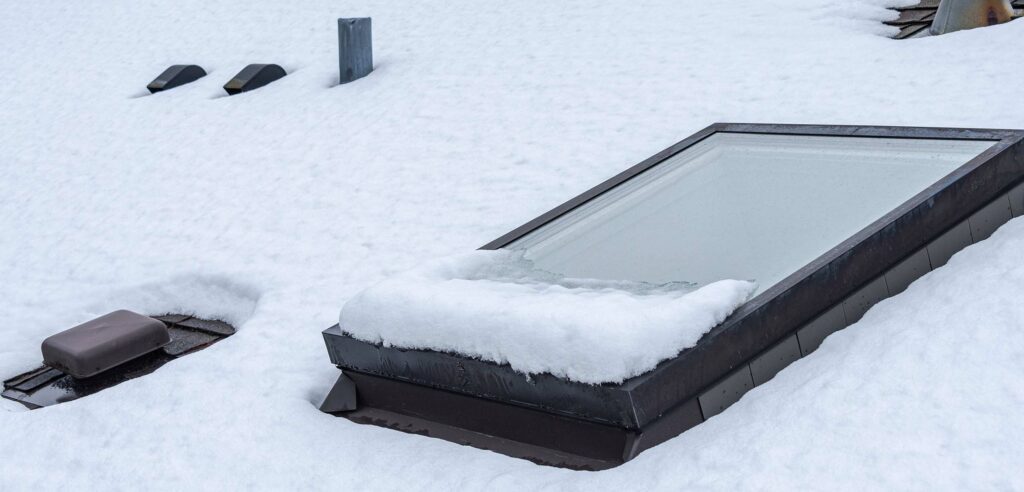
Where Should My Skylight be Installed?
There are lots of locations on your roof eligible for an overhead window. So the question you need to ask yourself is, what do you really want from the skylight? Orientation is always important. And make sure the size and location of your skylight are both safe for your property.
What Direction Should My Skylight Face?
In Alberta, a north-facing skylight is good if you’d like consistent natural light throughout the day, although you’ll get a lot less direct sunlight, if any.
Skylights facing west will be for those who want more out of the afternoon and evening light. Sunsets and natural dusk light will certainly be a more colourful option—literally. Keep in mind the long summer evenings in Alberta if you have a children’s room or an area you want to keep dark at night.
If you love direct sunlight, a south-facing skylight is the one for you. Since it will be in direct sunlight for most of the day, this option can also provide a little heat during those cold Alberta winters. Keep in mind that no matter how high the rating, any skylight will also allow some heat in the summer. If your house is already a little warm, maybe consider another option.
Finally, the east-facing skylight. Whether you’re a morning person or not, everyone can use a boost from some natural light to start their day. This option will have the most impact in the early hours but will still allow beautiful natural light throughout the day.
Skylights on Flat Roofs
If you have a flat roof, you’re going to get a mix of light levels throughout the year. Flat roof skylights can also be angled to face any direction you prefer, so there’s lots of flexibility here. But consider the following when settling on your skylight location:
- What room in your home do you want to receive the most natural light?
- Are there other items on your roof that can block incoming sunlight?
- Is your skylight installed in an area free from hazards?
Avoiding Roof Hazards
Wherever the skylight is facing, consider the potential debris that may hit the window, and if you’ll be able to clean it. For instance, placing a skylight right under a poplar tree is going to result in a lot of sticky cleanups when those buds come falling down.
Keep in mind that storms and sudden weather patterns in the Alberta foothills can lead to branch breakage and collapse whole trees. Avoid installing a skylight under these hazards or consider trimming back foliage.
What Size of Skylight is Right for My Home?
The right size of skylight to install depends on what you want from it. Of course, the idea of a huge skylight illuminating the room is great, but this is where it gets a little tricky.
Roof trusses are extremely important for the structural integrity of a house and cannot be cut without proper reinforcement. So sometimes a giant window above your living room just isn’t safe to install.
Do not be discouraged by this, though. There are plenty of options that will help you avoid a structural headache. Remember that two or three smaller skylights will have the same effect as one large one. From a design standpoint, they may even look better.
While many skylights are intentionally designed to fit between trusses, there will always be larger options. Either way, it’s very important to consult a professional before you start cutting into your roof.
Can the Alberta Hailstorms Smash a Skylight?
You might be wondering if some of the crazy weather we get in Alberta can break a skylight or cause it to crack. Think those golf-ball-sized hailstones that fall in the summers.
Virtually always, the answer is no. It is very rare for hail, snow, or other precipitation to be able to smash or crash through a properly installed skylight. These sky windows are made to withstand the elements!
Unforeseen debris, like actual stones, large tree branches, or metal items may be able to do more damage. So follow our guidelines above for choosing the right skylight location.
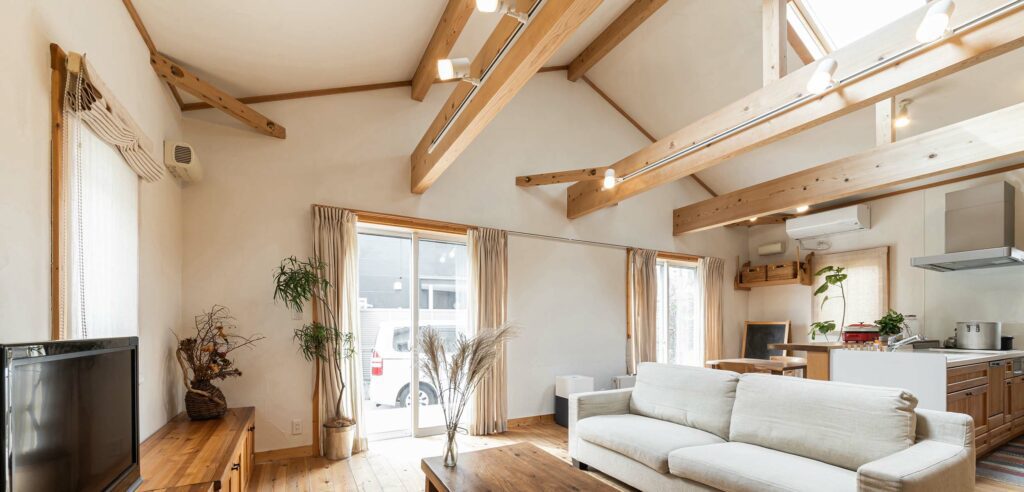
The Benefits of Installing a Skylight
Most of us enjoy a little vitamin D from the sun, even if we have to stay inside all day. But improving your mood isn’t the only benefit you’ll get from installing a skylight.
Many home buyers consider a skylight added value to a home. And you’re going to save energy by opening up your roof to the natural skies.
There’s Something About That Skylight Look
A well-placed skylight (or two) can dramatically alter the appearance of a room or even an entire home! When all of your rooms are tied together in matching natural light, it can change the whole mood of your living space. And you’ll know it when you enjoy a sunny day inside.
In many cases, a well-placed skylight can become the main feature of a room. People come in and it’s the first thing they notice. Right away you’ll see skylights going in next door and across the street.
Mainly, they make a room feel bigger and ceilings seem higher. It’s quite rare that a skylight will hurt the aesthetic of your interior. Direct sunlight may be agitating for some people. But focusing on the positioning of your skylight can help remedy this. Or consider a sun tunnel that reflects light instead.
A reliable roofing professional can tell you what to expect from the natural light passing into your home through a skylight.
Turn Off the Lights!
While it may seem kind of obvious, one of the ways that a skylight helps reduce your energy costs is by reducing the need for your lights to be on.
Particularly in lighter-coloured rooms, you’ll find that during the day, the natural light makes it easier to leave those light switches turned off. It may seem like small drops in a bucket, but it all adds up.
Enjoy the Solar Heat Gains
Certain skylights are designed to create heat from solar energy when they are facing direct sunlight. This can be very helpful for chipping a little off the heating bill in the winter. In the sunny skies of Calgary and the rest of Alberta, consider how much heat is beating down on your roof.
An SHGC (solar heat gain coefficient) rating will tell you how much solar heat will be transmitted through your skylight. The higher the rating, the more heat is meant to be transmitted. On the other end of the scale, a lower SHGC rating will mean the window is designed to keep the heat out. Handy in warmer climates.
Insurance-Approved Skylight Additions
There’s a lot to be said about the benefits of a skylight. Skylights are beautiful, they make your spaces feel fresh and comfortable, and they help lower your energy bills. The list goes on.Make sure that you’re working with a reputable roofing contractor when you decide on the skylight that’s perfect for your living space. Protecting your interior from the rain and complying with insurance requirements means working with certified skylight experts.
Work with a roofing company that helps educate you on the skylight solutions available and makes sure your addition is covered by insurance. And, you may even qualify for financing on a skylight or sun tunnel installation. Guns N Hoses is here to help you bring some light into your home, the right way!
If you're deciding between fixing a damaged roof or replacing the whole thing, you're probably wondering, “how long does a roof last?” There’s no exact answer to this question. It depends on the materials used and other factors.
Whether it's new construction or you're replacing an old roof on an existing home, you’ll want to consult a roofing contractor before making your final decision.
Let’s discuss what influences a roof’s lifetime and what to expect out of each roofing material.
Why Is a Healthy Roof So Important for Your Home?
Well…your roof protects your home and everything in it from the sun, rain, snow, wind, hail, and everything else mother nature throws at you. A healthy, well-functioning canopy is essential for keeping your family safe and keeping all the things you own and love dry.
Your roof is a part of your home that can lead to other trouble when it’s in disrepair. Water leaks and mould in your roof or attic can eventually lead to structural damage and other complications.
Your home’s roof is a guardian of your living space and it's also a major part of your property’s aesthetic and resale value.
Why Does a Roof Need To Be Replaced?
A roof is exposed to the elements 24 hours a day, 365 days a year. Over time, this exposure takes its toll and can cause it to deteriorate. Additionally, inclement weather can cause damage to a roof that needs to be repaired.
Almost all construction materials need to be replaced after years of being battered by winter storms and spring rains. Southern Alberta’s chaotic weather patterns take no mercy on residential roofing.
Eventually, your roof will reach a point where it needs to be replaced.
How Long Can You Expect A Roof To Last?
Several factors affect how long a roof will last. The type of roofing material is one of the most important factors.
Residential roofs can be flat (which is rare) or be built with angled roofs, either gable or hip. The vast majority of homes in North America have sloped roofs, and shingles are by far the most common roofing material for residential roofing. So let’s focus on shingle types when discussing expected canopy lifetimes.
Factors That Affect The Lifespan Of A Roof
Installing or replacing a roof is a big project! All parts of the exterior of your home are affected by more than just the materials they are made of.
The lifespan of a residential roof is affected by many factors, including:
● The roofing materials and shingles used.
● Climate. Hurricanes, tornadoes, blizzards, and hail storms can substantially lessen the lifetime of a roof.
● The slope. A steeper slope means that water and other debris will roll off more easily, which can extend the life of the roof.
● The quality and integrity of roofing substrates and the supporting structure.
● The quality of craftsmanship during installation and roof maintenance and repair.
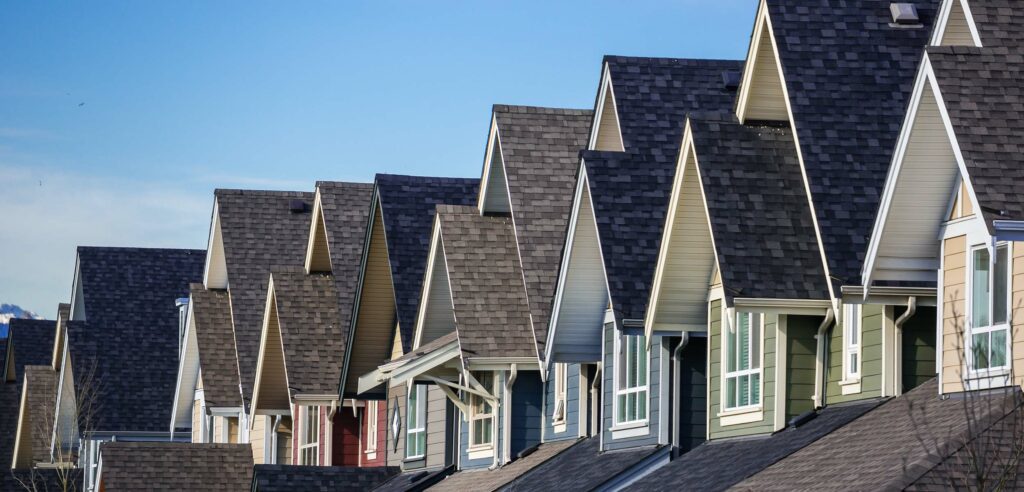
Typical Lifetimes for Different Roofing Materials
The type of material you select for your roof, the shingle type used, has a major impact on how long it will last before it needs to be replaced. In general, the more life you want out of your roof shingles, the more expensive they’ll be.
The most common type of residential roofing across Canada is asphalt shingles. Asphalt shingles are the most affordable and, unsurprisingly, have a shorter lifespan than other roofing materials. Aesthetics, installation costs, and other functionalities can also affect the price of roofing materials. Check out this blog for more info on shingle materials and the benefits of each.
If we’re being a bit general about it, a new asphalt shingle roof that has been professionally and properly installed should last between 15 and 30 years.
Average Life Expectancy for Different Shingle Materials
Getting the maximum life out of your roof shingles requires maintenance for some types. And keep in mind that felt underlay, membranes, and other parts of your roof may need to be replaced before the actual shingles.
Ask your roofing contractor about the expected lifetime of the exact material and products you are considering.
| Roofing Material | Expected Lifetime |
|---|---|
| 3-Tab Asphalt | 15-20 years |
| Architectural Asphalt | 25-30 years |
| Rubber Roofing | 40-50 years |
| Wood Shakes | 30+ years |
| Metal Roofing | 50-70 years |
| Clay Tiles | Up to 100 years |
| Slate Roofing | Up to 100 years |
| Composite Shingles | 20-40 years |
Things to Consider When Replacing Or Repairing Your Roof
Fixing a roof is not always a simple decision! If your roof is older, you may be debating between repairing issues or installing a new top on your home. When it comes time to replace or repair your roof, there are a few things to consider:
1. First, you need to evaluate how much new material and labour the project will require. If you only have damage in one area, it may be more cost-effective to just have that section repaired. However, if the damage is widespread, it may make sense to replace the entire roof.
2. How long has it been since your last roofing repair? Are shingles constantly being damaged or falling off? A bunch of cumulative repairs may end up being the same price as a whole roof replacement.
3. Another thing to consider is the type of roofing material you need. If you live in an area with severe weather conditions, is your current roofing material strong enough to face the elements?
4. Finally, you need to choose a reputable roofing contractor who will quote both repairs and replacement. Avoid companies that push you into a replacement without a thorough assessment.
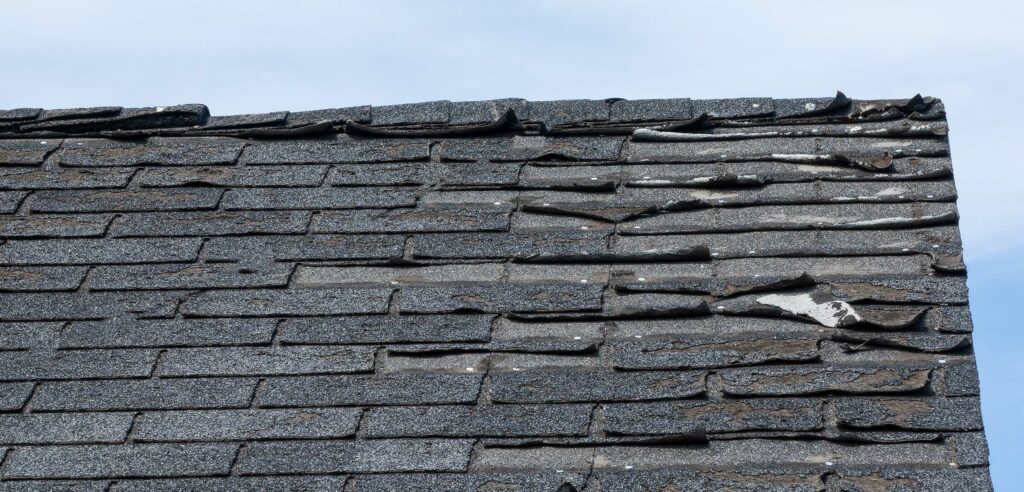
The Benefits Of Working With A Roofing Contractor
There are definite benefits to working with a roofing contractor. Like any specialist, a roofing contractor is a resource to help you make a better decision. Unless you have the experience and right safety equipment, getting up on a sloped roof is dangerous and not recommended.
Some benefits of working with a residential roofing contractor include:
● Installation and repairs are performed properly by experts.
● Many reputable roofing contractors often warranties on their work.
● Some insurance companies may require you to hire professional roofers for full coverage.
● A roofing company can help you make the best decision about repair vs replacement and what materials to use.
● Roofing contractors take the DIY stress off your plate!
Questions To Ask A Roofing Contractor Before Hiring Them
Protect yourself, your home, and your wallet by asking a few cursory questions before letting a roofing contractor examine your shingles. This will help eliminate headaches and give you confidence once the job begins.
● Ask them to please provide references? (and check Google reviews!)
● Ask them about their expertise with the roofing materials you want to use.
● Ask what they recommend and WHY they suggest a certain material or replacing the entire roof.
● Ask about warranty policies and workmanship guarantees.
Let Us Help You Get the Most Life Out of Your Roof
So a new residential roof can last anywhere between 15 and 100 years! That doesn't tell you much unless you select a specific roofing material and know what type of weather your shingles will be exposed to.
Asphalt shingles will last about 20 years or more and are the cheapest to install. Slate and metal roofing can easily last several decades with a proper installation.
Whatever type of shingle you choose, working with a trusted roofing contractor will help make your investment last longer. Guns N Hoses repairs and replaces roofs for homeowners with a wide range of budgets. We’ll make sure your new roof gets the very most out of its lifetime.
In Alberta, most residential roofs use shingles to protect your home’s infrastructure. But there are lots of materials and options available when it comes to choosing a certain type of shingle. And it’s not all about aesthetics.
The type of roof shingles used has an impact on your roof’s performance through seasonal challenges and your roof’s expected lifetime. In this blog, we’ll describe what types of roofing shingles are out there and what factors should influence your decision.
Guns N Hoses has been replacing and repairing roofs since 2006 in Calgary and the surrounding area. If you've got more questions about roofing materials and what type of roofing is best for your next project, we’re happy to keep you informed.
Give us a call to set up a roofing inspection or consultation, and we’ll make sure to give you a rundown on all the shingle specifics.
Asphalt Shingles
The most popular type of roofing shingle, asphalt shingles are made of a fibreglass mat that’s been saturated with asphalt and then coated with mineral granules. Black or dark grey is most common, but they’re available in a variety of colours to match your home’s tone.
Asphalt Shingle Pros:
● They’re some of the most affordable roofing materials on the market.
● Asphalt shingles are easy to install which keeps installation costs down.
● This type of shingle is low maintenance once installed. Simply clear away any debris that may have accumulated over time.
Asphalt Shingle Cons:
● Because they’re made from petroleum products, they aren’t the most environmentally friendly roofing materials.
● They have a shorter lifespan than other types of roofing shingles: anywhere from 15-20 years.
● Asphalt shingles are not as durable as some other types of roofing materials and can be damaged by high winds or hail.
The Different Types of Asphalt Roof Shingles
Asphalt shingles are the most common type of shingle used but there are different methods of installation and shingle types that can change the appearance of your roof. Asphalt has been used as a roofing material since the early 1900s, but the styles and methods have evolved over time.
Asphalt roof shingles come in 3 main types:
● 3-Tab Asphalt Shingles, which are the most simple and affordable. The name comes from the way they’re cut, which makes installation very simple. Because 3-tab shingles are made from a single layer of asphalt they are lightweight but also less durable than other types of shingles.
● Architectural Asphalt Shingles provide more variance in the look of your roof. These are also called dimensional shingles or laminate shingles. These asphalt shingles are manufactured with multiple layers to create different thicknesses. This provides more texture (and protection) which more closely resembles slate or wood shingles. This type of shingle represents the majority of residential asphalt roofing in Alberta.
● Luxury Shingles are a premium asphalt option that gives an even more realistic appearance of wood or slate shingles. This type of asphalt shingle is more durable, longer-lasting, and more expensive than other asphalt varieties. But still not as expensive as wood or slate.
Rubber Roof Shingles
Rubber shingles are a popular choice in Alberta because of their ability to withstand inclement weather. These shingles are made by recycling and processing used tires. The average roof uses about 500 recycled tires for a complete installation.
Rubber Shingle Pros:
● The most hail-resistant shingle available with a lifetime of 40-50 years.
● Lightweight and eco-friendly (made entirely from recycled rubber).
● Very aesthetically pleasing.
● Potential insurance discounts for installing rubber shingles.
Rubber Shingles Cons:
● More expensive than asphalt shingles (although less than most other materials).
● Lengthier installation process.
Guns N Hoses specializes in installing asphalt and rubber shingles on roofs in Southern Alberta. We can help you weigh the benefits and costs of these roofing materials if you’re due for new shingles or a roof replacement.
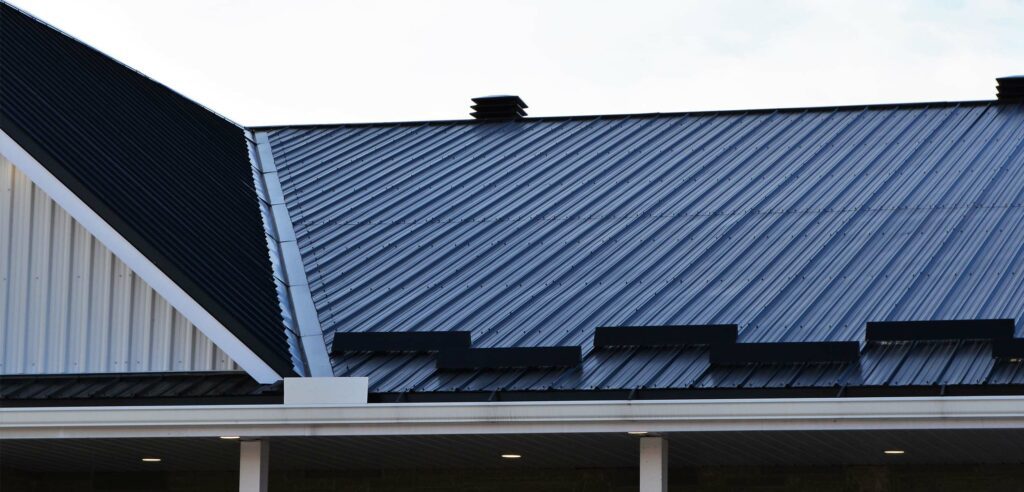
Other Types of Roof Shingles
Wood Shingles & Shakes
Wood shingles, or shakes, are cut from blocks of wood that have been milled into thin, even pieces. Wood shakes are made from split logs that have been hand-cut or sawn into thick, uneven pieces.
Cedar is a popular manufacturing choice for wood shakes in Western Canada. Wood shingles and shakes add a rustic look to your home’s exterior.
Wood Shingles Pros:
● Wood is a renewable resource, making this one of the most eco-friendly roofing materials.
● Wood shingles and shakes can last up to 30 years with proper maintenance.
● This type of roofing material provides good insulation for your home.
Wood Shingles Cons:
● Wood shakes are at risk of termites in certain regions.
● They require more maintenance than other types of roofing shingles. You’ll need to treat them regularly to prevent rot and insect damage.
● Wood is a flammable material, so your home is at a higher risk for fire if you have a wood shake or wood shingle roof.
Metal Roof Shingles
Metal roofing is made from steel, aluminum, copper, or a mix of these metals. The manufacturing uses about 99% recycled metal. Metal shingles are available in a variety of colours and styles.
Metal Shingles Pros:
● Metal roofs are extremely durable and can last more than 50 years with proper maintenance.
● They’re fire-resistant, which means your home is less vulnerable to fire damage.
● Metal roofs are eco-friendly because they’re made from recycled materials.
Metal Shingles Cons:
● Metal roofs are one of the more expensive roofing materials on the market.
● They require special training and equipment to install, which can drive up installation costs.
● Metal roofs can be noisy during a rainstorm or when hail hits them.
Slate Roof Shingles
Slate roof shingles are made from natural stone that’s been kiln-fired. Slate shingles have a beautiful aesthetic that many homeowners appreciate. But slate is relatively expensive and a very heavy material to work with.
Slate Shingle Pros:
● Slate roofing is extremely durable and can last up to 100 years with proper maintenance.
● This type of roofing material is fire-resistant and eco-friendly.
● Slate provides good insulation for your home.
Slate Shingle Cons:
● Slate is one of the most expensive roofing materials on the market.
● It requires special training and equipment to install, which will increase installation costs.
● Slate roofs are heavy and may require reinforcement of your home’s structure before installation.
Clay Roofing Shingles
Clay roofing shingles are made by kiln-firing moulded clay tiles. They are made of natural clay that’s been extracted from the ground. Clay shingles can be coloured during manufacturing to offer shades of white, yellow, orange, red, and brown.
Clay Shingle Pros:
● Clay roofing shingles are extremely durable and can last up to 50 years with proper maintenance.
● They’re very fire-resistant.
● Clay roofs are eco-friendly because they’re made from natural materials.
Clay Shingle Cons:
● Clay roofing shingles are more costly than asphalt.
● They require special training and equipment to install, which can drive up installation costs.
● Clay roofs are heavy and may require reinforcement of your home’s structure before installation.
Solar Roofing Shingles
Solar roofing shingles are made from photovoltaic cells that generate electricity when exposed to sunlight. They look like traditional asphalt shingles, but they have the added benefit of generating renewable energy for your home. Because of their costs, solar shingles are not very common in homes connected to the main electrical grid.
Solar Shingle Pros:
● Solar roofing shingles are environmentally friendly and can help reduce your carbon footprint.
● They can help you save money on your energy bills by generating renewable energy for your home.
● Solar roofing shingles are durable and have a lifespan of 20-30 years.
Solar Shingle Cons:
● Solar roofing shingles have a high initial investment, including other electrical components.
● They require special training and equipment to install, which can drive up installation costs.
● Solar roofing shingles are not available in all areas and don’t make sense in non-sunny climates.
Composite Roof Shingles
Composite roof shingles are made from a mix of materials, including fibreglass, rubber, and recycled plastic. These are also referred to as polymer composite or synthetic shingles.
Composite Shingle Pros:
● Composite shingles can be made to mimic many types of other roofing materials including wood and slate.
● They’re durable and have a lifespan of 20-30 years.
● Each specific composite has a different rating, but in general composite shingles are more fire-resistant than wood or asphalt.
Composite Shingle Cons:
● Composite roof shingles are more expensive than asphalt shingles.
● They’re not very resistant to impact from hail or falling debris.
● This type of shingle is not ideal for heavy sun exposure and offers less insulation than other materials.
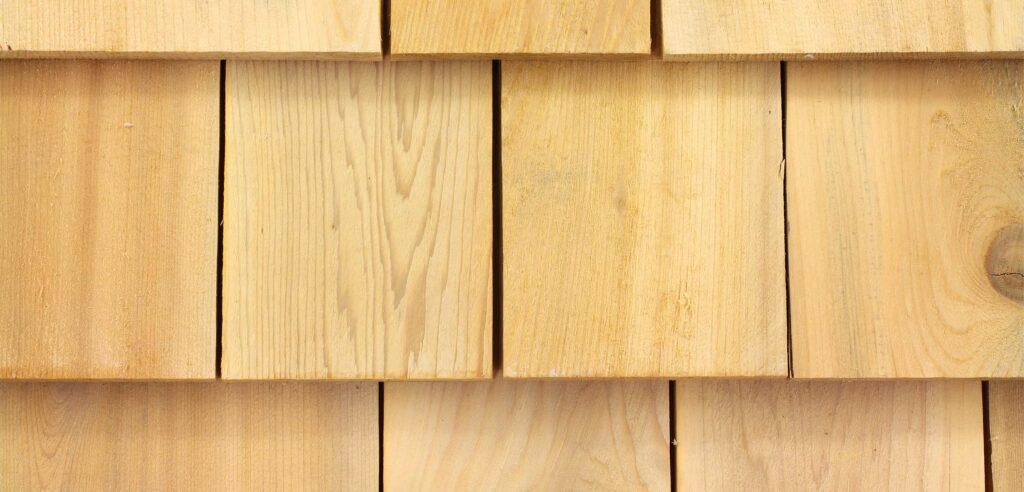
Factors to Consider When Choosing Roof Shingles
If your home is due for a roof replacement, there are a few factors to consider when choosing the right shingle type. Replacing the shingles on your roof is a big investment and one that deserves considering all the solutions.
At Guns N Hoses, we’ll always walk you through all the options available and make sure you’re well aware of the benefits of each type of shingle. But here are some things to consider during the roof replacement process.
The Climate You Live In
If you live in the Calgary area, you know we’re prone to extreme weather conditions. This includes hail, heavy snow, and high winds. You’ll want to choose a shingle that’s more durable.
Southern Alberta receives a lot of natural sunlight each year. So make the shingle type you prefer is rated for high UV exposure.
The Slope of Your Roof
If your roof has a steep slope, you’ll want to choose a shingle that’s less likely to blow off in high winds.
The Type of Home You Have
Your roof is a major part of your home’s aesthetic, so choose a roofing material that complements the rest of your house. Several shingle options have superior durability and a desirable look.
Your Roof Replacement Budget
Obviously, the cost is always a factor when it comes to major home upgrades and purchases. Consider not only the initial installation costs of each shingle type but also the maintenance costs for your selected material.
Helping You Select Your Shingles
No matter what type of roofing shingle you decide on, Guns N Hoses is here to help through every step of the process. We’ll begin by assessing your current roof and making suggestions for shingle selection.
We offer financing options to help make sure every one of our clients can keep their home safe and protected for years to come. We’ll make sure you know exactly what to expect with your new shingles and that you’re aware of the options available within each budget.
Get a hold of our shingle specialists to set up a visit to your home. We look forward to replacing your shingles and keeping you safe under a reliable roof!
8 Common Causes of a Leaky Roof
A roof is one of the most important parts of your home. It keeps your family and belongings safe and dry. Unfortunately, roofs can develop problems, especially in the unpredictable climate of Alberta. This can lead to leaks and water damage.
Half the battle of fixing a leaky roof is understanding the root cause. Let's discuss 8 common reasons for leaky roofs in Calgary. We'll also provide tips on how to prevent these problems from occurring again
Leaving a leak unattended is never a wise option. Get in touch with our team to get professional roofing advice about how to stop your leaky roof from dripping. We’ll get back to you within 24 hours and can always schedule a roof repair if your roof isn’t holding up.
Why Are Roof Leaks Dangerous?
A roof leak can be dangerous for a few reasons. First of all, an unattended leak can damage your roofing materials and shorten the life of your roof. Second, a roof leak can cause water damage to your home's interior. This can lead to costly repairs down the road.
Finally, if you have a roof leak in the wintertime, it could lead to an ice dam forming. An ice dam can cause even more extensive water damage to your home.
Addressing even the smallest leak right away is always the wisest course of action. Professional repairs prevent little drips from becoming big disasters. So give us a call at the first sign of water leaking through your roof.
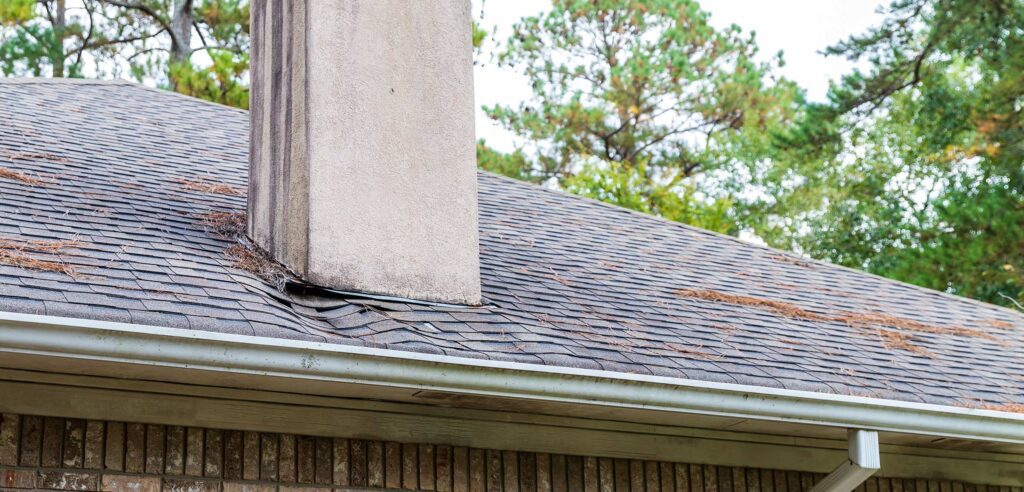
Common Causes of Roof Leaks
Many things can go wrong with a roof and cause it to leak. Here are some of the most common roofing problems that cause leaks and drips around your home
Ice Dam Buildup
Ice dams are a common roofing problem in Alberta. An ice dam occurs when snow and ice build up along your roof's edge. This prevents water from draining properly off of your roof, which can cause leaks to develop. Ice dams often form due to poor ventilation in the attic space of an older home
If you have an older home with no insulation in the ceiling or inadequate insulation, heat rising from your living spaces may melt any snow on top of your roof. That snow will then refreeze along the edges when it reaches colder temperatures at the exterior. This causes an ice dam to form on your roof's edge.
The best way to prevent an ice dam is by properly insulating your attic space and ensuring that there is proper ventilation. You can also install Heat-Line to melt the snow and ice before it has a chance to cause problems.
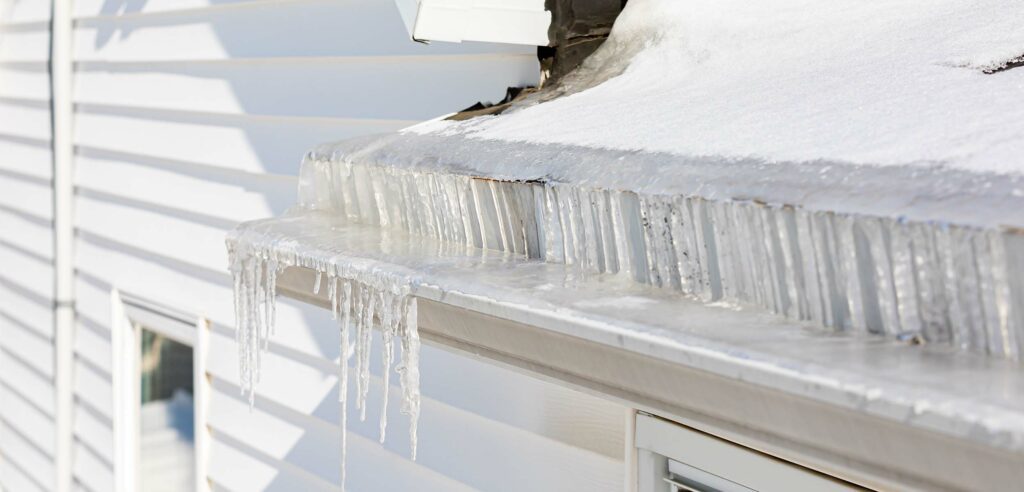
Cracked Flashing
Flashing is a metal strip installed around roofing materials where they meet walls, chimneys, or other roofing elements. It helps seal the roofing material and prevents water from seeping into the seams. If flashing is not installed correctly, cracked, or missing altogether, water will be able to leak through these areas.
Even the smallest leaks slowly damage your roofing materials and infrastructure. The best way to prevent this problem is by having your roof inspected regularly by professionals who know what unhealthy flashing looks like.
Missing or Loose Shingles
Shingles are one of the most common roofing materials and standard for most residential construction in Alberta. But even weather-resistant shingles can be damaged by wind, rain, or hail over time. In fact, more than ½ of all hail damage in Canada occurs in Alberta.
If shingles are missing or loose, water will be able to seep through these areas and cause roof damage. Make sure to inspect your roof following major hail storms. And have a professional roofer repair any damaged shingles immediately.
Clogged Gutters
If your gutters are not properly maintained, they can easily become clogged with debris like leaves, sticks, and ice. This blocks proper drainage of water off of your roof during a storm or snowmelt. And water that isn’t draining is a risk for causing leaks.
Regular maintenance and cleaning of gutters, eavestroughs, and fascia is every homeowner’s responsibility. Annual gutter inspections are one of the easiest ways to keep your roof’s drainage channels open and flowing. Consider installing a leaf guard if your property has lots of trees or you live in a windy area.
Roof Valleys Not Sealed
Valleys are roofing elements that help channel water from one side of the roof to another. If valleys become damaged or clogged with debris, water will pool and potentially leak into your home. A faulty seal can also lead to drips in your attic.
Keeping valleys clear and sloped properly is another part of annual roof maintenance. Valleys should be evaluated before (or during) every winter to avoid pools becoming giant hunks of ice.
Cracks in Your Chimney
If your roof has a chimney, it will be especially susceptible to roof leaks. Cracks in the roof around your chimney can cause roof damage over time as water seeps through. Look for holes in the mortared areas of your chimney or wear and tear along the top.
For some, fixing a chimney crack simply means replacing the worn or missing mortar (cement type mixture used during stone or brickwork). In other cases, a leak near your chimney could be flashing or shingles that have come loose.
Chimney repairs are very particular and always best managed by our experts at Guns N Hoses.
Worn Seals Around Skylights or Windows
If you have skylights in your home your roof is more susceptible to leaks! Skylights are a common source of roof leaks because they often have seals that wear out over time due to exposure from sun and rain.
Minor leaks in skylight seals can be fixed with some silicone sealant and a steady hand. If you notice a drip near a skylight or window, start with this method. But leaks that are always dripping, have significant water flow, or won’t stop after applying sealant, should be looked at by the pros.
Problems with Roof Vents
Roof vents are those little pipes jutting out of your roof. They take moisture out of your home, preventing it from causing problems to the interior. If the seals around roof vents become worn out over time, water will be able to leak into your home and cause roof damage.
In Alberta, with its sudden storms and frequent chinooks, adequate roof ventilation is essential. Let our team make sure your roof vents are equipped for the rest of the year. Gun N Hoses ventilation warranties also cover ventilation work that goes below your roof.
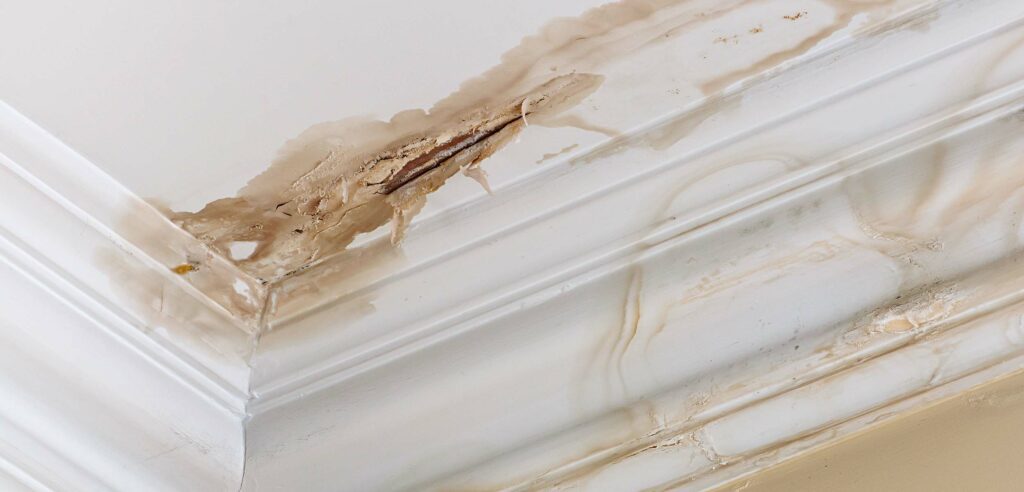
Roof Repairs: Better Sooner Than Later
A roof leak can be a serious problem for any homeowner. If you think that your roof has been leaking or the signs are obvious, it's important to contact a roofing professional immediately.
Never ignore a roof leak and be aware of the trouble areas that your roof may be vulnerable to. By taking care of roof leaks quickly, you'll save money on repairs later down the road!
Your roof is an out-of-sight-out-of-mind feature that is often forgotten about. While it’s often the last priority for updates, cleaning, and maintenance the reasons roof maintenance is important are numerous. It’s actually one of the more important elements in your home to maintain and repair.
Your roof is constantly exposed to the elements, causing it to become more damaged over time compared to other aspects of your home. To save money, time, and the stress of having to get your roof replaced, you should schedule professional roof maintenance at least twice a year and after any severe weather event.
Keep reading to learn more about the top 5 reasons it’s essential to take care of your roof and who to call to get it done.
Top 5 Reasons to Maintain Your Roof
There are many reasons to maintain your roof. Proper maintenance can save you money, time and can keep your home looking its best. The top 5 reasons you should be sure to take care of your roof include:
Extend the Life of Your Roof
Since your roof is constantly exposed to the elements, it can quickly become damaged. Although your roof is built to last in these conditions for decades, harsh weather, storms, and other factors can break down your roof more quickly.
By having your roof inspected regularly, you’ll be able to identify problems and have them repaired before they become a more significant issue. This will keep your roof in good condition and can extend your roof’s life, allowing you to avoid costly roof replacements before they’re needed.
Save Money
Preventative roof maintenance can save you money as minor repairs are much less expensive than major repairs or complete replacement. Proper care helps you save money in two ways:
- It keeps your roof functioning properly so it can better withstand poor weather that can cause damage
- It allows damage to be caught and fixed early, keeping your roof from wearing out and deteriorating
To save money in the long run, we recommend that you have your roof inspected once a year or after any significant storms or environmental issues.
Keep Your Warranty Intact
Many warranties for roofing require that your roof be inspected at least once a year. If you fail to do this, you may not stay within your warranty guidelines, which can increase your costs significantly.
As a homeowner, it’s your responsibility to ensure your roof is regularly inspected, repaired, and cleaned to keep up with your roof warranty. If you fail to do so, it can cost you more money in the long run.
Maintain the Value of Your Home
A well-maintained roof is a vital component in any house. If you’re planning on selling your home at some point, it’s a good idea to stay on top of maintaining your roof.
Keeping your roof in good shape can add value to your home and saves you from having to replace it before you sell.
Lower Your Utility Costs
If your roof is in bad condition, it can make your home less energy-efficient, driving up your utility costs.
Leaks, holes, and general damage have a significant effect on how your entire home is ventilated. However, proper and regular roof maintenance can address all of these issues.
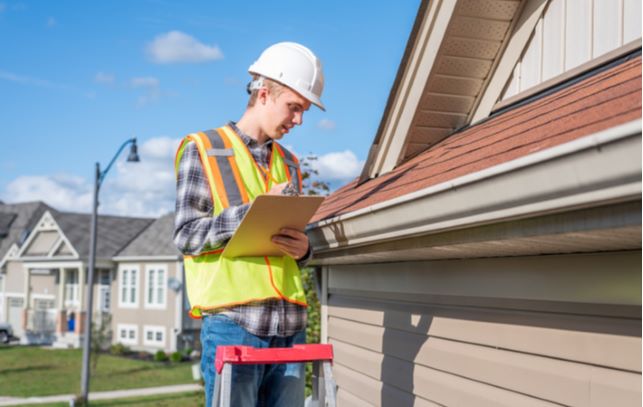
What To Do if Your Roof Needs Maintenance
If your roof needs attention, the first step is to have it inspected.
During an inspection, a professional will look for leaks, wear and tear, weather damage, and any other structural problems from installation or previous repairs.
The four main parts of an inspection include:
- A structural inspection includes looking for any structural damage
- A material inspection includes checking for any missing or damaged roofing material
- An interior inspection includes checking the interior of your home for signs of roof-related damage
- A workmanship Inspection includes examining your roof for any past installation or repair mistakes
After a roof inspection, a professional roofer will give you a detailed report outlining any issues and a list of recommended repairs. It’s important to take this report seriously if you want to maintain your roof properly.
When Should You Get Your Roof Inspected
At Guns N Hoses, we recommend that you get your roof inspected annually and after any event that could cause potential damage. This ensures that your roof is taken care of year-round, saving you stress, time, and money in the long run.
The best time to get your roof inspected is in the spring or fall when the weather isn’t too cold. This ensures the safety of the roofers performing inspections and maintenance and increases the success of repairs.
Get the Help You Need Today
The better care you take of your roof, the longer it will last. Our goal at Guns N Hoses is to keep your roof performing at its best for as long as possible.
If it’s time for a roof inspection or you have any questions about maintenance or repairs, please contact us today!
If a hail storm recently swept through your neighbourhood, you may be wondering how to tell if your roof has been damaged. Identifying hail damage on siding is relatively straightforward, as it is easy to see. However, determining whether your roof has sustained damage from a hailstorm may be a little more complicated.
It’s essential to be able to assess how badly your roof has been damaged so you can determine if you need to get your roof repaired.
Keep reading to find out how to identify hail damage on your roof and how to fix it if it does happen.
What Factors Affect Damage?
Several factors impact how much damage a hail storm can do to your roof. The three main factors are:
- The direction and speed of the wind
- The size and shape of the hail
- The type, age and condition of your roof
How to Identify Hail Damage
The good news about hail damage is that it is typically covered by insurance. But, in order for your claim to be approved, it has to be properly assessed by a professional roofing contractor.
If you’re not sure if you need an inspection, we’ve made a step-by-step guide to help you identify hail damage and determine whether or not it needs to be repaired.
Step One: Checking for Damage
The steps required to assess your roof for hail damage are:
- Safely set up a ladder, so you have access to your roof
- Check the metal roof vents, ridge caps and shingles of your roof and note any damage
- Look for any additional dents, cracking or missing pieces
Step Two: Identify the Severity of Damage
The 3 major signs of hail damage include:
- Bruising: Bruising refers to dents that have a little give. They aren’t always visible, so you should use your hands to feel for damage.
- Cracking: If there are circular cracks in any area on your roof, it was most likely caused by hail.
- Missing asphalt: Missing pieces in the asphalt may be a sign of hail damage. Look for areas on the shingle where you can see the black substrate underneath.
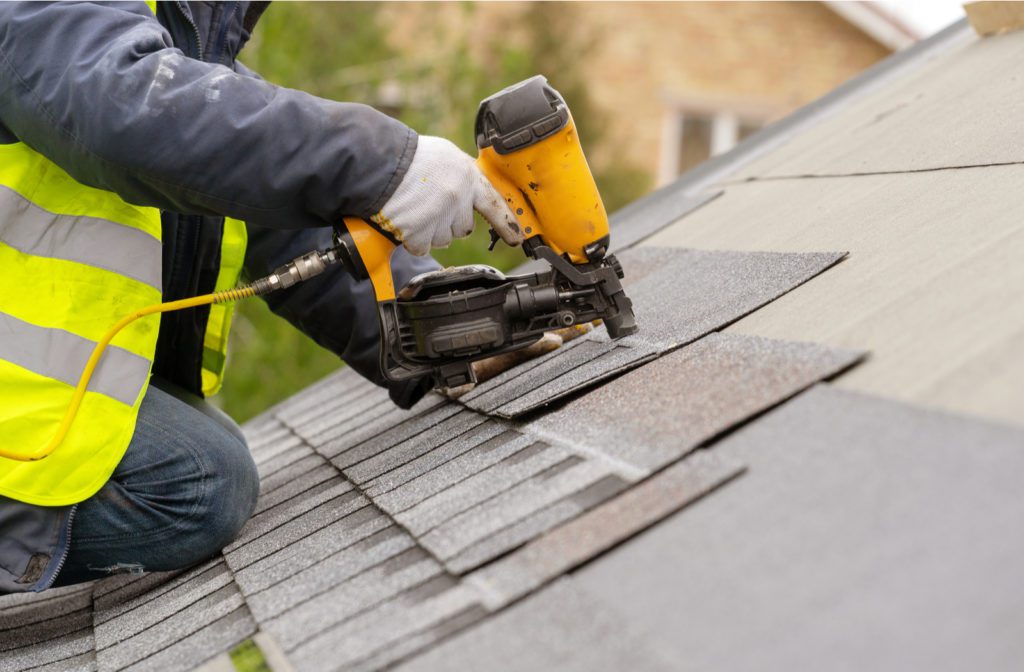
How to Fix Hail Damage
Even if your roof hasn’t been severely damaged, it is crucial that you don’t ignore it. Over time, chipped or damaged shingles can lead to gaps in your roofing system and can cause further damage such as leaks.
Being proactive about hail damage can save you from having to replace your roof unnecessarily.
Unfortunately, hail damage to your roof is not easy to repair on your own if you don’t have the tools and expertise. The best way to repair a roof that has been damaged by hail is to contact an experienced, local roofer you can trust.
If you have assessed the damage to your roof and decide you need to get it professionally repaired after a hail storm, there are a few steps you can take to make the process easier. Before contacting a professional, you should:
- Contact Environment Canada to get a storm report
- Call your homeowner's insurance provider to inform them you are making a claim
- If you want to make a claim, find out how long you have to do so
- Carefully select a company that is willing to communicate with your insurer
Preventing Hail Damage
According to Environment Canada, most of the damage to your house during a hailstorm occurs to roofs and roof coverings. If you live in a place with frequent or severe hailstorms, you should consider taking preventative measures to protect your roof from future damage.
Unfortunately, it is impossible to completely safeguard your roof against all damage caused by a hailstorm, but you may be able to reduce the severity of damage. Some preventative measures you can take include:
- Get an annual roof inspection to identify potential problem areas
- Consider getting your roof replaced using more durable materials
- Keep your trees and shrubs trimmed to avoid debris damaging your roof during a storm
- Have an emergency storm plan ready with all the necessary insurance information
The Takeaway
According to the Insurance Bureau of Canada, the frequency, severity and cost of hailstorms are rising across the country. If you live in an area that is prone to hailstorms, it is important that you know how to assess your home for damage and what to do if the damage requires repairs.
To keep up with the condition of your roof, it is best to receive a yearly inspection. Ensuring that your roof is in good condition can save you from costly and unnecessary repairs later on and can even lower your risk of hail damage in the future.
If you have any questions or concerns about hail damage, contact us today!
Glorious Summer Sun & Hail?
One day, you’re outside lounging by the poolside, and the next, you’re picking up pieces of your roof and siding from your yard.
If this sounds familiar, we get it. Life in Calgary is bittersweet. We get to enjoy the most sun in the whole country, but it comes with a price.
So, what can you do to protect your home from inclement weather like hail?
If you’re installing new roofing or siding after a storm, or it’s time for an upgrade, you can consider using higher-grade material that is made to withstand the damaging effects of rogue hail and extreme winter conditions—even in the middle of summer.
Choosing the Right Shingles
If your roof or shingles need replacing, you shouldn’t hesitate to get the job done. If you wait too long, leaks can develop without your knowledge. Water and moisture can seep into your roof, attic, and eventually into your home, causing organic growth and other damage along the way.
When it comes to choosing the shingles to use on your home, there are a few weather-resistant options you can decide on.
Calgary offers a $3,000 roof rebate for homeowners whose roof was damaged by hail, and insurance will cover some, if not all, of the damage as well, so there’s really no reason to not fix your roof before it becomes a problem.
Shingles Come in 4 Varieties
- Asphalt
- Slate
- Metal
- Rubber
The type you choose should be resistant to the weather in your area. In Calgary, asphalt shingles are common because they come with a Class 4 rating, meaning they can withstand the elements a little better than lower ratings.
Rubber shingles are made from 70% recycled tire rubber and may cost more than asphalt. However a locally-manufactured product, like Euroshield rubber roofing, is able to withstand the impact from a steel ball being dropped from 20 feet, so you know hail won’t stand a chance against your roof.
The best way to ensure you are getting a hail-resistant roof is to talk to your roofing contractor. They will be able to go over the ins and outs of what type of shingles is suitable for your home.
Have a look around your neighbourhood if you aren’t sure what types of shingles to get. Do your neighbours have asphalt shingles, slate, rubber or metal? Contractors who are familiar with your weather will likely make similar recommendations for your neighbours as well.
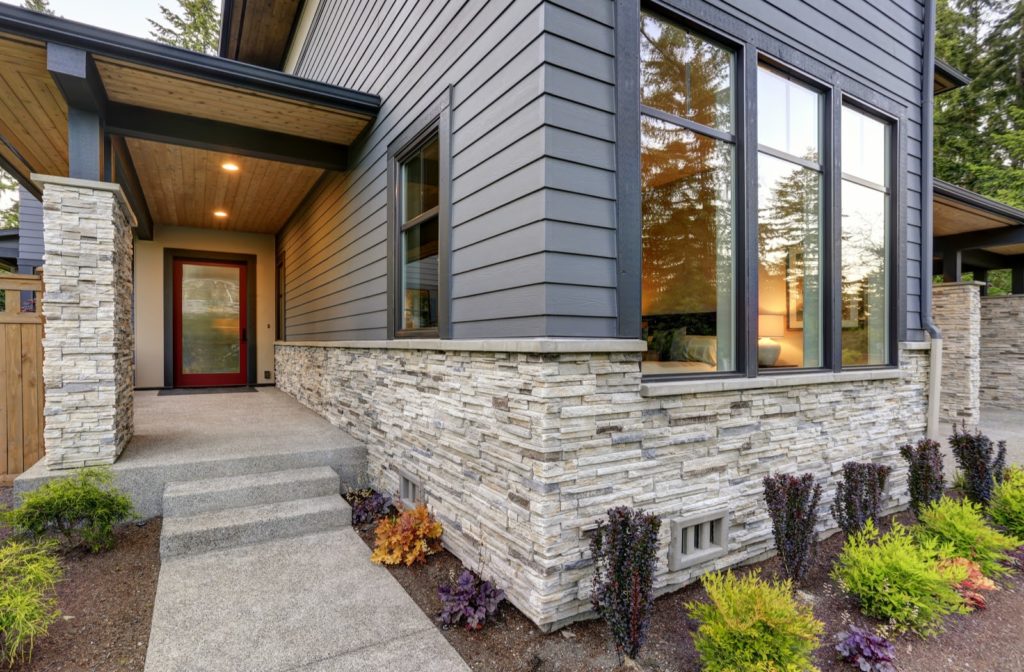
Choosing the Right Siding
Finding the right siding for your house can be tricky. We know that looks matter, so when you’re deciding, you will likely weigh aesthetic and practical considerations.
The 4 most popular choices are:
- Vinyl
- Hardie Board
- Composite
- Stone veneer
Vinyl
Vinyl siding is a very common choice of material in Calgary. It is easy to work with, comes in a multitude of colours, is durable, and doesn’t cost a lot to install. You can wash away dirt, and you won’t have to worry about repainting.
Vinyl siding can be punctured by hail, but it is also versatile and easy to replace. If you choose a generic colour, you can typically purchase new pieces to match.
Hardie Board
Siding from JamesHardie comes in a few varieties, but one thing stays the same: this product withstands the inclement Calgary weather we all know.
Available in:
- HardiePlank lap siding
- HardieShingle siding
- HardiePanel vertical siding
Made from fiber-cement material, this siding protects your home without sacrificing character and style.
Composite
Composite is made of wood and has that natural look to it. Although it is nice to look at, it does break down and rot and can attract insects and trap moisture. Composite wood can last for a long time if it is properly taken care of.
Composite wood is relatively strong, but hail can leave dents and divots in the wood. If hail cracks or penetrates the wood, it can lead to moisture entering the space between your siding and the barrier of your home. Wooden pieces should be replaced as quickly as possible to avoid further damage. Oftentimes, a new piece of wood will not match an existing piece.
Stone Veneer
Stone veneer is made of lightweight concrete and can be a very cost-effective option.
Stone veneer is very strong and can deflect hail from damaging your home. However, cracks and damage can lead to moisture entering in between the siding and the barrier of your home. Cracks should be mended right away with putty, and it doesn’t always look exactly as it used to.
Making Your Choice
When it hails, all 4 types of siding can be punctured with holes or damaged in other ways. How you choose will depend on how much maintenance you are willing to put in.
Hiring a Professional
A licensed contractor will be able to help you decide which shingles and siding you should use. If you live in an area like Calgary, a local contractor will be able to provide you with the best recommendations that will help protect your home as best as possible from hail, wind, rain, snow, and sun—yes, even UV rays can damage your home!
If your home has been damaged by hail—or if your materials are aging—it may be time for an upgrade. Contact your local professional contractors to discuss your options and receive a quote.
